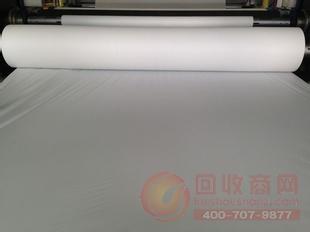The use of films is becoming more and more widespread, among which, breathable films are being developed more and are used in food, medicine and hygiene products. Making breathable films involves the various components on the production line, and every procedure must be taken care of. Set of stretching device Japan pioneered the development of breathable films for the health industry as early as 1983. The United States began production of breathable films in the middle of 1990. This product entered Europe in about 1995, and since then, its market share has increased year by year. The normal procedure for producing a gas permeable film is to first prepare a substrate, a PE or PP substrate, and add 40% to 60% calcium carbonate to the mixture or masterbatch. It is then stretched on a cast film or an inflated film line. After stretching, the calcium carbonate crystals partially detach from the polymer matrix. Thus, microchannels are formed in the cross section of the film to facilitate the passage of water vapor at a later stage. Material drying / feeding In order to ensure that the humidity of the raw materials used to produce the gas permeable film is kept to a minimum, the material should be pre-dried by a dry air drying device before processing. If the moisture of the residue is too high, the unstretched and stretched film will form pores. The material was loaded into a drying hopper and an extruder through a vacuum adsorption conveyor, and then the components were fed using a dustproof weight device. Extrusion In terms of product quality, the requirements for breathable film extrusion are extremely high. The high performance single screw extruder used is equipped with a long processing unit with a diameter of 28-33 mm. In principle, the screw diameter is between 75 and 150 mm, the former being suitable for co-extruders and the latter for main extruders. Melt filtration was carried out using a hydraulic piston filter and a mesh belt filter. Feed head / die Breathable films are mostly composed of three layers, sometimes only a single layer. If a three-layer structure is used, the outer layer should be made of 100% raw material, and the intermediate layer can be recycled. The quenching and take-up device first casts the melt base on a 200 mm diameter matte steel roll. The chill roll that follows is a high-gloss roll with a diameter of 400 mm. The base formwork includes solid side walls and the first measurement formwork is directly mounted to the quenching unit. Thickness measuring device and base inspection Two sets of thickness measuring devices can be mounted on the casting film line with the stretching device. Among them, the first group of measuring devices are used to measure the original film, and the second group is used to measure the film after passing through the stretching device. A plane thickness gauge is set in the second measuring device. The system develops a target gauge for the first measuring device, which also takes into account the raw data of the film during stretching. This information is further exported to the die. The intelligent linear digital camera scans the film substrate to check for the presence of air holes to ensure quality. The recorded data is classified according to the system definition, based on width, length, and target location. Stretching device The film that has not been stretched enters the stretching device. Here, the film is lifted to a stretching temperature by a preheating roll, and then uniaxially stretched between the stretching nips. After stretching, the molecular structure freezes on the stabilizing rolls, so that the material can no longer be restored to its original shape. Breathable films used in the sanitary industry are typically embossed after stretching to reduce the gloss of the film and give the film a woven feel. Unwinder The fully automatic nonwoven unwinder has the same principle as the indexing machine and is mounted above the laminating unit. Laminating device The nonwoven fabric can be pressed onto the gas permeable film using a hot melt laminating apparatus. The hot melt is continuously applied to the nonwoven fabric and then pressed together with the film. Most of the hot melts used in lamination are rubber based viscose. Trimming/recycling The corners of the film are cut before entering the stretching device, the laminating line and the winder. If the scrap is a pure film, it can be returned to the process for reuse. This recycling process is usually done by a horizontal scrap extruder or an online recycling system. overhead shower heads,overhead shower system, overhead showers,overhead shower arm Guangdong Kinen Sanitary Ware Industrial Co.,Ltd. , https://www.kinengroup.com